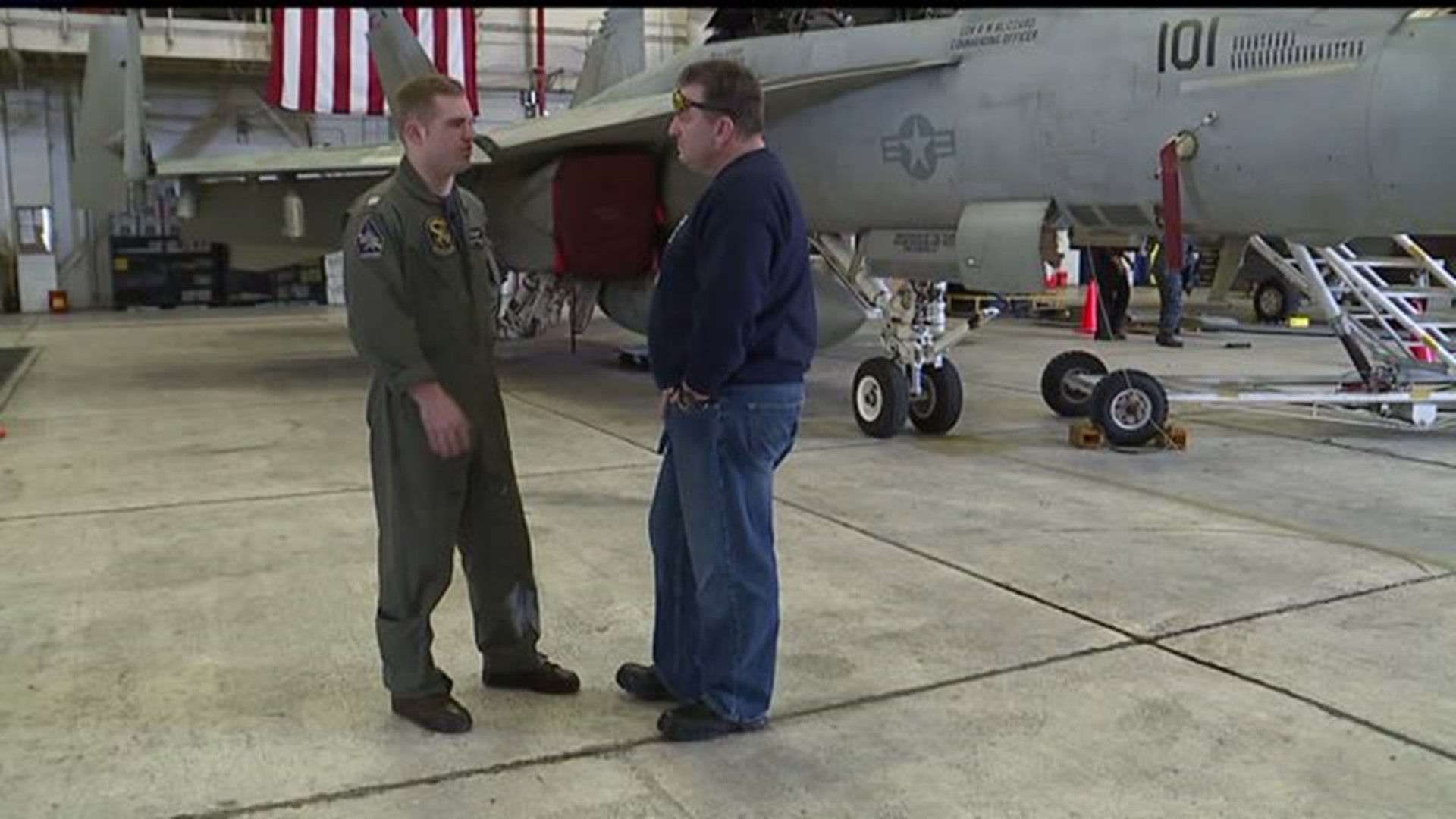Strike fighter squad 32 is one of the aviation groups assigned to the USS Dwight D Eisenhower aircraft carrier just back from a seven month deployment. Lt. Dan Macmillan call sign "Cena" is a fighter pilot from Pennsylvania whose been flying F/A-18F Superhornets for about two years. "It's been very awesome! Dream of mine since I was a child. Obviously to go fast!"
During the recent deployment aboard the Ike Macmillan flew plenty of missions over enemy territory. "The missions going into country- Iraq and Syria would last about seven to eight hours." Sometimes while flying patrol to protect the aircraft carrier there was contact with fighter jets from Iran. "We`d join up on them and make sure they weren`t going to do anything to us and try and get them out of the way of the aircraft. Typically they`d be professional and friendly. We`d wave to them, and they`d give us a thumbs up. They`d go on their way, and we`d go on our way."
And at the end of each mission is a nerve wracking carrier landing. "After an eight hour mission, you still have to land on the boat so that`s one of the hardest parts of being in the navy. But it’s exhilarating" When the deployment comes to an end the training certainly doesn't.
At the Oceana Naval Air Station the pilots fly almost every day. Training flights begin with a briefing that details everything about the flight. Pilots are brought up to speed on any technical or mechanical details of their jet. Flight suits and helmets are strapped on, and it's time to head to the tarmac to the awaiting F-18. "We`ll go out to practice dropping bombs or fighting air to air or just catching up on proficiency flying air navigation routes and that kind of stuff." At the same time the ground crew members and mechanics make sure nothing is overlooked. "Guys work countless hours every day to get these systems up and running. We are all greatly appreciative of what they do for us to make sure we get airborne and do the mission."
One of those 'guys' is Petty Officer Second Class Darryl Reddick, an aviation mechanic from Pennsylvania. He says, "We just came back from deployment so it feels good to know you fixed something and they you see a jet take off, and you think like wow I did that. So it does bring a sense of pride."
And to make sure nothing is missed, Petty Officer John Snyder also of Pennsylvania, oversees quality assurance to make sure everything is done by the book each and every time. "We're on the front lines. We`re putting jets into enemy territory. It`s our work that`s going off the front end of the ship. You can`t get much better than that as far as patriotism and stuff like that."
It's a team effort at the naval air station and aboard the aircraft carrier to get the fighter jets into the sky for the mission and back safely. Protecting our country and our freedoms. Macmillan says, "We're most proud of getting the mission done and making sure that everybody is safe here in America and making sure we`re keeping all the terrorists at bay. Just getting our mission done. Having all these people come together doing their own job so that we can get or mission done as a group."
The fighting 32 squadron is responsible for flying and maintaining the fleet of F-18 Superhornets. When the entire air wing attaches to the air craft carrier, there are several squadrons. The overall number of aircraft on board is more than 70. That's jets, surveillance planes, and helicopters. That also means an additional thousand or so more personnel to live on board the aircraft carrier. There is not date revealed for the next deployment, but they all have to be ready to go in a matter of about 72 hours when called upon.

